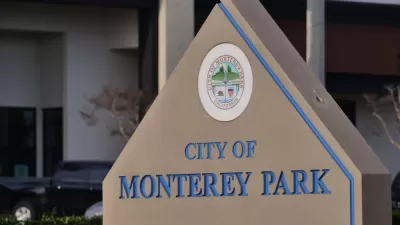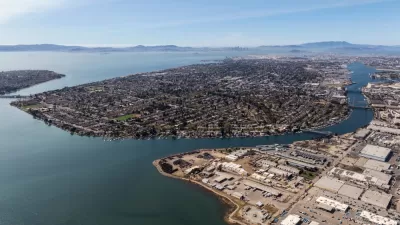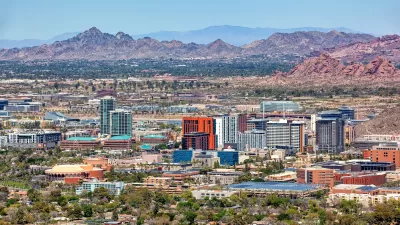Land use planning decisions are mostly made by city councils and planning commissions. But there are times when the people decide, as exemplified by the city of Monterey Park's recently approved Measure JJ.

Should land use planning decisions be made by voters? There is no simple answer to this question. In the latest elections, in about 20 California cities where growth and development measures were on the ballot, voters were mostly anti-development. The city of Monterey Park was one of the few exceptions, where voters passed a land use measure allowing for focused growth in certain areas of the city.
Monterey Park lies about seven miles east of downtown Los Angeles, at the western edge of the San Gabriel Valley. Measure JJ was placed on the ballot by the Monterey Park City Council. On November 3, 2020, the measure was approved by 52.3% of voters, resulting in the adoption of a new Land Use Element (LUE) for the Monterey Park General Plan (GP). Under California law, the city’s GP must include seven elements including the LUE. Overall, the GP, particularly the LUE, constitutes the city’s vision for economic, social, and land use development. In Monterey Park, voter approval is required to adopt or amend the LUE. On March 3, 2020, voters rejected a previous version of the LUE identified as Measure II.
The LUE makes some adjustments to land uses, building sizes, and building heights. It also removed overlay zones for affordable housing in the Corporate Center Drive area that was included with Measure II. Since Measure JJ was approved by voters, the LUE would regulate land uses in the city until 2040. To ensure that the LUE is implemented, Measure JJ authorizes the City Council to adopt regulations by ordinance.
FULL STORY: Monterey Park, California, Measure JJ, Land Use Proposition (November 2020)

Planetizen Federal Action Tracker
A weekly monitor of how Trump’s orders and actions are impacting planners and planning in America.

San Francisco's School District Spent $105M To Build Affordable Housing for Teachers — And That's Just the Beginning
SFUSD joins a growing list of school districts using their land holdings to address housing affordability challenges faced by their own employees.

The Tiny, Adorable $7,000 Car Turning Japan Onto EVs
The single seat Mibot charges from a regular plug as quickly as an iPad, and is about half the price of an average EV.

As Trump Phases Out FEMA, Is It Time to Flee the Floodplains?
With less federal funding available for disaster relief efforts, the need to relocate at-risk communities is more urgent than ever.

With Protected Lanes, 460% More People Commute by Bike
For those needing more ammo, more data proving what we already knew is here.

In More Metros Than You’d Think, Suburbs are Now More Expensive Than the City
If you're moving to the burbs to save on square footage, data shows you should think again.
Urban Design for Planners 1: Software Tools
This six-course series explores essential urban design concepts using open source software and equips planners with the tools they need to participate fully in the urban design process.
Planning for Universal Design
Learn the tools for implementing Universal Design in planning regulations.
Smith Gee Studio
City of Charlotte
City of Camden Redevelopment Agency
City of Astoria
Transportation Research & Education Center (TREC) at Portland State University
US High Speed Rail Association
City of Camden Redevelopment Agency
Municipality of Princeton (NJ)





























